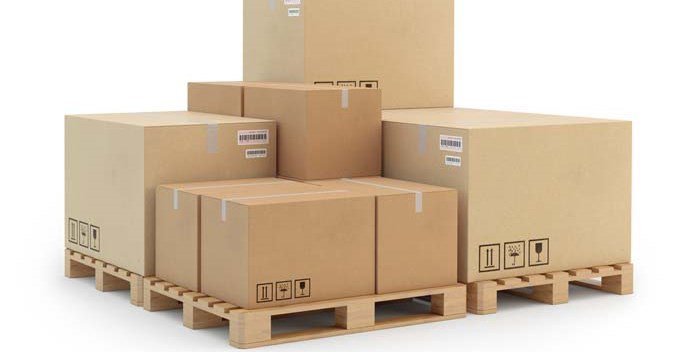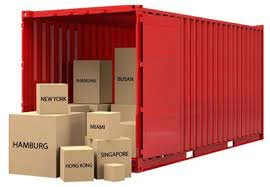Key takeaways
Understanding the nuances of LCL shipping and the major financial considerations involved is crucial for companies trying to maximize their supply chain operations in the modern, globalized world. Through a thorough examination of the subtleties of Less than Container Load shipping and taking into account elements like volume, weight, distance, and additional costs, businesses may adeptly negotiate discussions to obtain favorable rates while guaranteeing effective cargo delivery. An essential stage in this process is examining and contrasting LCL freight rates offered by different suppliers. This will help firms find areas where they can save costs and make wise choices. Furthermore, taking advantage of shipping volume and cultivating long-term relationships can result in special discounts and customized solutions that improve cost savings and optimize operations. By using technology to effectively control expenses and engage in negotiations with several freight forwarders, businesses can stay ahead in the dynamic world of international shipping.


Introduction
In the contemporary international marketplace, enterprises aiming to enhance their supply chain functions must adeptly handle the intricacies of less-than-full (LCL) transportation and associated expenses. Achieving cost reductions while maintaining service quality requires an understanding of the intricacies involved in consolidating goods in shared containers and the several factors that impact price. Businesses can find chances for optimization and improve their negotiating skills by investigating and contrasting LCL freight prices from various suppliers. Reliable service and cost savings may be further increased by utilizing volume and fostering long-term partnerships with freight forwarders. Technology-enabled effective cost management provides a tactical edge for obtaining favorable rates and expediting the bargaining process. By employing a strategic strategy and paying close attention to cost considerations, firms may effectively navigate the realm of LCL shipping and achieve their logistical goals.
Understanding LCL Shipping and Cost Factors
For maximum cost savings in LCL freight rate negotiations, it is essential to have a solid grasp of LCL shipping and the numerous cost components involved. Consolidating your goods with other shipments in a shared container is known as an LCL, or less than container load. Comparing this approach to FCL (full container load) transportation can result in cost savings, but there are additional complications that must be handled.
You may share container space with other shippers when you choose LCL shipping, which will ultimately lower the total cost per unit of goods. But the total cost depends on a number of variables, including the amount and weight of your cargo, the distance it must go, the ports of origin and destination, customs costs, and any extra services or extras. Making wise choices throughout the negotiating process requires an understanding of how these elements affect the total cost.
To put it simply, determining LCL freight rates necessitates striking a careful balance between price and quality of service. You may effectively negotiate affordable prices and ensure dependable and efficient service for your cargo by learning about the nuances of LCL shipping and considering the different cost elements.
The amount and weight of your cargo, the distance it must travel, the origin and destination ports, customs costs, and any additional services or surcharges are some of the important cost considerations to take into account when negotiating LCL freight rates. Gaining knowledge about these elements and their role in the whole cost can help you make better choices while negotiating.
Researching and Comparing LCL Freight Rates
It is important to investigate and compare LCL freight prices from several providers before engaging in negotiations. Gaining a thorough grasp of the market environment and seeing possible areas for cost savings require taking this step. Obtaining estimates from several shipping lines or freight forwarders allows you to compare prices and assess the level of service provided by each company.
Making educated choices throughout the negotiating process is made possible by investigating and contrasting LCL freight costs. It allows you to evaluate the rates’ competitiveness, take into account the extra services supplied, and ascertain the whole value proposition that each supplier offers. You may choose the most dependable and affordable solution that fits your shipping needs and budget thanks to our in-depth study. constraints.
Furthermore, by conducting a detailed comparison of LCL freight rates, you can uncover any discrepancies in pricing, identify potential areas for cost optimization, and negotiate more effectively with the providers. This proactive approach not only helps you secure competitive rates but also ensures that you receive a high level of service and support for your shipments. In essence, research and comparison are key steps in the negotiation process that pave the way for maximizing cost savings and achieving successful outcomes in LCL shipping.
Start by gathering quotes from multiple freight forwarders or shipping lines. Look for providers that specialize in LCL shipping and have a good reputation for reliability and customer service. Consider factors such as transit times, track record for on-time delivery, and the availability of additional services like customs clearance.
After you’ve compiled a number of quotes, contrast them side by side. Look for any notable variations in price and make an effort to determine the causes. Remember that if the least expensive alternative jeopardizes the dependability or quality of the service, it might not always be the best one. Strive to strike a balance between price and worth.
Leveraging Volume and Long-Term Partnerships
You might be able to get better deals from the suppliers if you combine your shipments and increase the volume. This is so that container space may be used more effectively and the cost per unit of cargo can be decreased overall with larger shipment quantities. Long-term alliances might sometimes result in better terms and pricing since the supplier appreciates the steady business.
Building a solid rapport with your shipping line or freight forwarder may also lead to individualized service and solutions that are specifically designed to satisfy your shipping requirements. You may take advantage of a reliable partner’s experience in streamlining shipments, streamlining routes, and managing intricate customs processes by collaborating closely with them. This cooperative strategy guarantees dependable and effective service in addition to increasing cost savings. for your cargo.
Furthermore, taking advantage of your cargo volume and developing enduring relationships may lead to special savings, first-choice scheduling, and entry to premium services. You may establish a win-win partnership with a supplier that extends beyond financial gains by exhibiting dedication and loyalty. This methodical approach to partnership development and negotiation lays the groundwork for long-term, profitable LCL shipping operations.
You might be able to get better deals from the suppliers if you combine your shipments and increase the volume. This is so that container space may be used more effectively and the cost per unit of cargo can be decreased overall with larger shipment quantities. Long-term alliances might sometimes result in better terms and pricing since the supplier appreciates the steady business.
Think about collaborating closely. discuss potential prospects for bulk savings or specialized pricing agreements with your shipping line or freight forwarder. Make sure that everyone is on the same page and driven to save money by reviewing your shipping requirements on a regular basis and communicating your long-term objectives.
Negotiating with Multiple LCL Freight Forwarders
It is essential to bargain with many LCL freight forwarders to optimize cost savings. This enables you to get the best rates and conditions by comparing and leveraging the many offers.
Be ready to offer precise and comprehensive details about your shipment—including its volume, weight, dimensions, and any special needs—during negotiations. This will enable the forwarders to better estimate and customize their offerings to meet your requirements.
Don’t be scared to request discounts or extra services throughout the negotiating process. Think about haggling over things like travel times, schedule flexibility, or value-added services like help with customs clearance or cargo insurance. Seek for solutions that are win-win for both sides and be willing to make concessions.
It’s important to keep the lines of communication open with every forwarder you are dealing with. Answer their questions as soon as possible, give them your thoughts on their proposals, and inform them of any updates or changes that might have an impact on your shipment. Over time, establishing trusting connections with several forwarders can enable you to negotiate better prices.
Utilizing Technology for Efficient Cost Management
In order to maximize cost savings during the negotiation and administration of LCL freight rates, technology might be a useful instrument.
A variety of cutting-edge web platforms and sophisticated shipping management tools are available that allow real-time visibility into pricing, timetables, and travel times from several suppliers. These state-of-the-art tools enable you to find untapped cost-saving opportunities and improve the effectiveness of your bargaining methods in addition to making the process of comparing and assessing various choices simpler.
You may obtain a thorough picture of the market environment and make well-informed judgments, as well as negotiate the best prices for your LCL shipments, by utilizing cutting-edge technologies. These technological advancements expedite the bargaining process and give you the information and understanding required to maximize your shipment operations and achieve significant cost savings.
Adding online platforms and shipment management software to your workflow improves your capacity to compare prices and schedules and makes it easier to communicate with different suppliers. This degree of efficiency and automation not only saves time but also enhances the quality of your discussions overall, freeing you up to concentrate on making strategic decisions and getting the most out of your LCL shipping initiatives.
Furthermore, by automating processes like document management, tracking and tracing, and invoice verification, technology may help with effective cost management. As a result, there is a lower chance of mistakes, more operational effectiveness, and more time for making strategic decisions.
Keep up on the most recent developments in shipping technology and investigate your possibilities. Putting the appropriate technological solutions into practice can give you a competitive edge and help you achieve significant cost savings in the long term.


Conclusion
To sum up, determining LCL freight rates necessitates careful consideration of all relevant cost variables, rigorous investigation, and calculated judgment. You may save money and choose the most dependable and economical solution for your shipping requirements by investigating and contrasting prices offered by various suppliers. Long-term relationships and volume may be used to further reduce costs and provide individualized care that is catered to your unique needs. Achieving great results in LCL shipping operations and optimizing savings require negotiating with several LCL freight forwarders and leveraging technology for effective cost control. Through a proactive and strategic approach to negotiating, you can streamline your shipping operations, achieve competitive pricing, and create long-term value for your company.
FAQ
How to optimize freight costs?
Adopting a diverse strategy that includes careful study, smart bargaining, and utilizing technology is crucial to optimizing freight costs. Through a comprehensive analysis of LCL freight costs, you can pinpoint areas where expenses may be reduced and determine which shipping solution is the most economical. Furthermore, combining shipments, forming long-term alliances, and negotiating with several freight forwarders can increase savings even more and provide individualized care that is catered to your unique needs.
Moreover, you may find hidden cost-saving opportunities, expedite the negotiating process, and give real-time visibility into pricing and schedules by integrating sophisticated shipment management software and web platforms into your workflow. Utilizing technology, you may automate processes like tracking, document management, and invoice verification, increasing operational effectiveness and resulting in substantial long-term cost savings.
In conclusion, research, negotiation, and technology innovation must all be used in a proactive and strategic manner to optimize freight costs. You can obtain competitive pricing, streamline your shipping processes, and create long-term value for your company by putting these best practices into effect.
How to negotiate freight rates?
It is important to approach the process of freight rate negotiation strategically and with a comprehensive awareness of the major cost considerations. Start by obtaining quotations from many suppliers and contrasting them side by side. Look for any notable variations in price and make an effort to determine the causes. Keep in mind that if the least expensive alternative jeopardizes the dependability or quality of the service, it might not always be the best one. Strive to strike a balance between price and worth.
Leverage your shipping volume and form long-term agreements with providers to optimize cost savings. You might be able to get better deals if you combine your shipments and send more of them. Long-term relationships might result in more advantageous terms and pricing since the supplier values recurring business. This may lead to individualized care and solutions that are designed to satisfy your unique shipping requirements.
When engaging in negotiations with many LCL freight forwarders, be ready to supply precise and comprehensive cargo details. Take into account variables including travel durations, schedule flexibility, and extra services like customs processing. Ask for discounts or value-added services when you can, and try to come up with solutions that work for everyone. You may eventually achieve higher rates by keeping lines of communication open with all forwarders and developing solid relationships with them.
In order to maximize cost savings during the negotiation and administration of LCL freight rates, technology might be a useful instrument. Make use of internet platforms or sophisticated shipment management tools to evaluate prices, itineraries, and delivery times offered by different suppliers. These technologies help improve the effectiveness of your strategy, find undiscovered cost-saving options, and expedite the negotiating process. By automating processes like tracking, document management, and invoice verification, you may improve operational efficiency and save a lot of money over time by integrating technology into your workflow.
In summary, negotiating freight prices necessitates a proactive, strategic strategy that blends technology innovation, research, and negotiation. You can obtain competitive pricing, streamline your shipping processes, and create long-term value for your company by putting these best practices into effect.
What are some ways to reduce transportation costs while optimizing and scheduling with efficiency?
There are a number of practical methods for cutting transportation expenses while efficiently scheduling and optimizing. Whenever feasible, combine shipments to take advantage of bulk discounts and lower the total cost per item. You can obtain economies of scale and reduce the cost of shipping per item by consolidating several smaller shipments into a single, bigger package.
Optimizing your shipment routes and timetables is another method to cut down on transportation expenses. You may decrease the distance driven, use less fuel, and save money on transportation costs by carefully organizing and arranging deliveries. By using sophisticated route planning tools, you may find the most economical routes and set delivery times to save as much money as possible.
Lean techniques may also help your transportation operations become more efficient by streamlining procedures and getting rid of waste. You may cut down on wasteful stages, shorten wait times, and streamline loading and unloading processes to save expenses associated with transportation while also increasing overall efficiency.
Furthermore, you may monitor and manage transportation operations more efficiently by utilizing technologies like GPS tracking, real-time visibility tools, and predictive analytics. Long-term cost reductions may be achieved by optimizing routes, cutting down on delays, and increasing overall efficiency through the use of data-driven insights in decision-making.
All things considered, you may maximize savings in your logistics operations and save transportation expenses by combining lean methods, optimization strategies, strategic planning, and cutting-edge technology.
What are some strategies for lowering transportation costs while optimizing and scheduling with efficiency?
There are a number of important tactics you may use to optimize your shipping operations and save logistics expenses. Combining smaller shipments into bigger ones is one efficient strategy to take advantage of volume discounts and consolidate shipments. This can boost productivity and lower the cost of transportation per unit. Additionally, minimizing trip lengths, consuming less fuel, and lowering transportation costs may all be achieved by optimizing shipping routes and timetables. Deliveries may be scheduled for optimal cost savings and the most effective routes can be found with the use of sophisticated route planning software.
Streamlining procedures and getting rid of waste may also be achieved by using lean methods in your logistics operations. You may save expenses and raise overall productivity by eliminating pointless stages, cutting down on wait times, and streamlining the loading and unloading processes. In addition, the utilization of technological tools like GPS monitoring, real-time visibility tools, and predictive analytics may provide considerable cost savings over time by offering insightful information on how to optimize routes, minimize delays, and boost productivity.
Through the integration of lean principles, optimization strategies, strategic planning, and cutting-edge technology, it is possible to optimize shipping operations and reduce costs associated with logistics.
Hope this article was helpful for more check out our precious blog post by clicking here.


